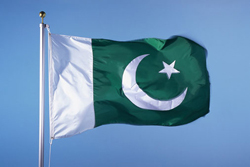 SINGAPORE--More than two years in the making, Pakistan's proposed new drug-pricing policy still hasn't won over drugmakers. The country's health ministry proffered a draft that would peg prices to those in India and Bangladesh, with generic prices at 30% less, on average, than the brand price in those neighboring countries.
SINGAPORE--More than two years in the making, Pakistan's proposed new drug-pricing policy still hasn't won over drugmakers. The country's health ministry proffered a draft that would peg prices to those in India and Bangladesh, with generic prices at 30% less, on average, than the brand price in those neighboring countries.
As the policy was being drafted, the ministry involved was scrapped and replaced by the Ministry of National Health Services, Regulation. Along the way, all sorts of pricing plans were introduced, only to be dropped later. The new ministry came up with the latest draft, and officials there say the policy will likely become law by the end of this year.
Pharma organizations wasted no time denouncing the proposal, saying it lacks transparency and could trigger drug shortages. Industry reps had been working with government officials since 2012 to develop a policy. Five multinational companies have shut down production facilities in Pakistan in the meantime because of the nation's disjointed oversight, the industry groups pointed out. More than a dozen appeals of past pricing decisions are still pending before the Drug Regulatory of Pakistan (DRAP).
The Pakistan Pharmaceutical Manufacturers Association said the health ministry and DRAP not only ignored its recommendations, but ignored the fact that drug costs have been rising everywhere over past 15 years. The Pharma Bureau, which represents the Pakistan research interests of multinational companies, suggested the draft proposal still does not conform to international standards and does not offer "a predictable and transparent" process the industry can follow.
Bureau Co-Chairman Arshad Hussain said at a news conference that Pakistan's pharmaceutical market is worth $2.3 billion, a tenth the size of India's. He said Pakistan has 600 companies operating in its market, exporting $190 million worth of drugs, versus India's $25 billion as of the end of the current fiscal year.
Indian drugmakers, he said, have been "struggling to survive in a lopsided regulatory environment" focusing on controlling prices rather quality standards. The result, he said, has been a shortage of essential medicines.
The DRAP draft goes into agonizing detail about its proposal, even designating formulae for pricing new strengths of drugs on the market. It also is concerned with pricing new pack sizes, in both cases also pro-rating the price on the basis of an existing cap.
One provision states that a the price of a "New Chemical Entry" would be based on the average price for the same brand in both India and Bangladesh, if available there. If the NCE is available in only one country, DRAP would rely on the average price there, with the exchange rate figured in.
If the NCE is not in either of those two markets, DRAP would fix the price based on the lowest retail price in developing countries that regulate drug prices, or on the wholesale price according to an index based on U.K., Australian or New Zealand drug-coverage programs.
Another section in the convoluted draft states that after 5 years on the Pakistan market--or in cases where at least three other generics are on the market, whichever is earlier--the maximum retail price of the original branded version would be lowered by 30%.
Meanwhile, the Pharma Bureau's Hussain said DRAP's policy draft, if implemented, would result in severe shortages of drugs considered essential and lifesaving in Pakistan and no new ones would be made available.
- read the story from the Business Recorder
- and more from Inside Finance
- and an article from Customs Today